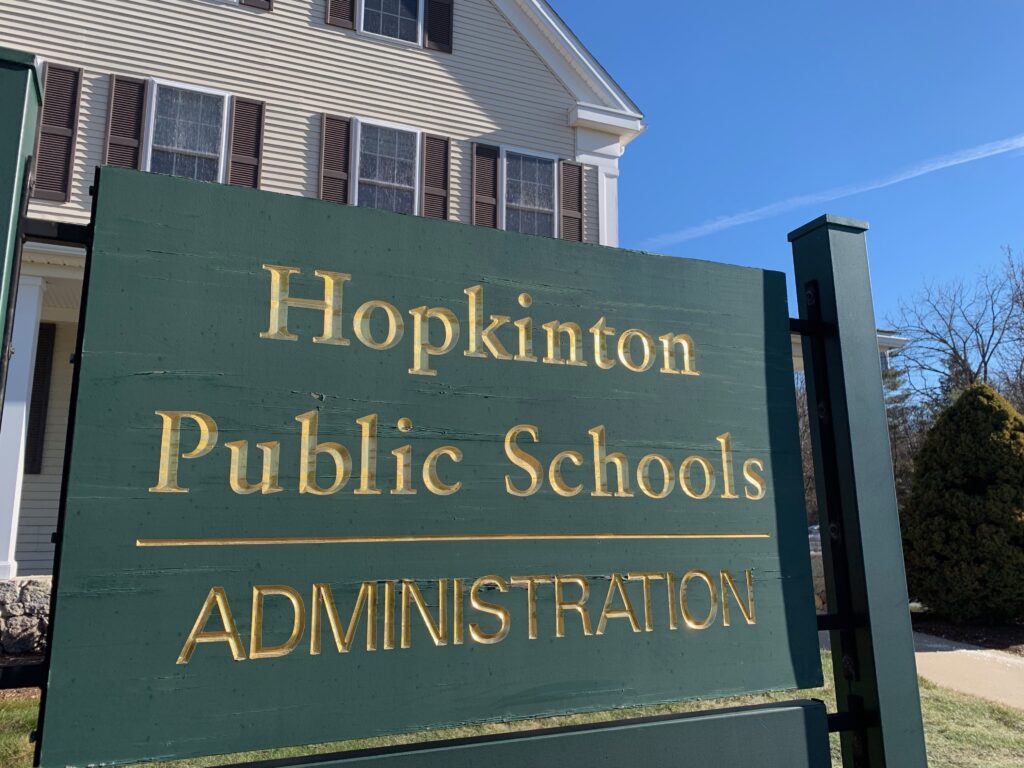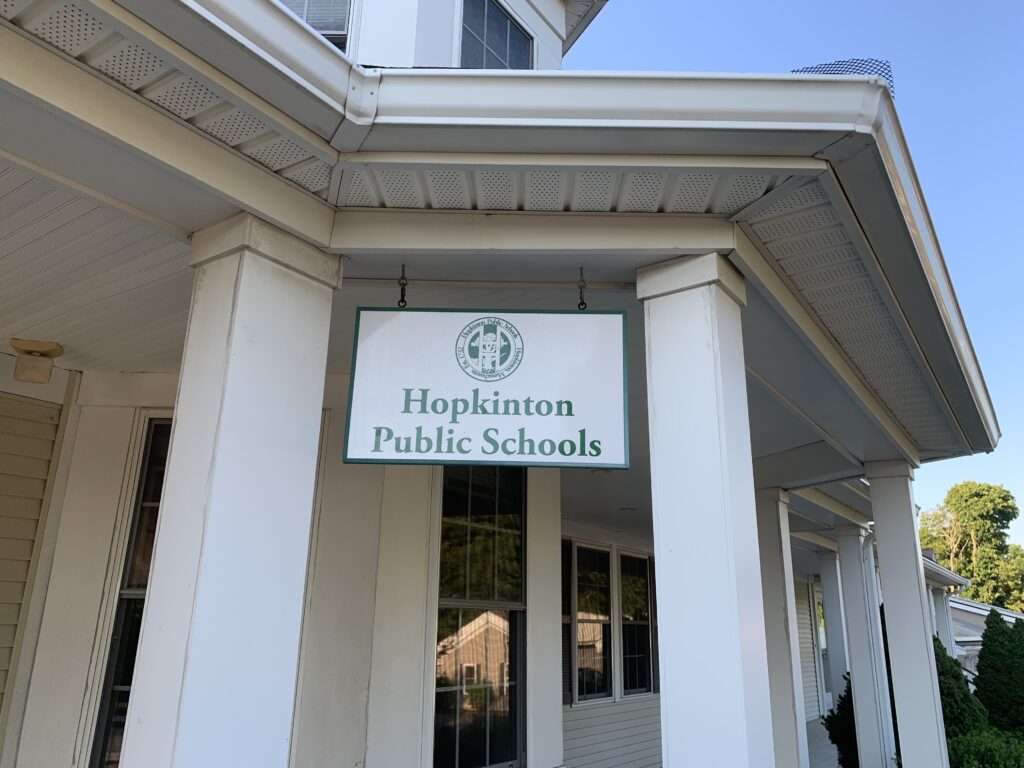The proposed fiscal year 2025 budget totaling $63,144,790, a 5.35% increase, again took center stage at the School Committee meeting on Thursday.
Last week, Superintendent Carol Cavanaugh and Assistant Superintendent of Finance Susan Rothermich gave an overview of the budget plan with the Select Board and Appropriations Committee present.
This week, they again reviewed the proposal. A public forum will be held Jan. 11, with a School Committee vote expected on the budget Jan. 18. The superintendent also will speak on the budget at the next regular meeting on Jan. 4.
Key points made during the presentation included the fact that the budget was built for 4,290 students. Currently, the student population is 4,217.
Superintendent Carol Cavanaugh pointed out there are 684 students at Hopkins School and 105 children approved or pending approval in pre-kindergarten at Marathon School. “That program has more than doubled,” she said.
The superintendent said when the budget is built, it addresses shifts in demographics and changing student needs. It also is designed to address academic, behavioral, mental health, special education and social/emotional needs of students, she said.
Cavanaugh said data shows an increase in students needing special education services (614 students, 35 out of district) but a decrease in the number of children (226) for whom English is not their first language.
The superintendent said there are 7.3 teachers for every 100 students with disabilities. Neighboring communities have a 10 per 100 ratio (or more), a level Hopkinton had in 2019 that has been declining. Said Cavanaugh: “7.3 is dipping too low.”
A review of building principal requests included a 0.5 full-time equivalent (FTE) adjustment counselor at Marathon, 1.2 math tutors at Elmwood, a 0.05 music position at Hopkins, a 0.2 Mandarin teacher at the middle school and a 1.0 teacher at the high school.
Another request seeks an assistant principal at Hopkins. The superintendent said the level of enrollment, six more classrooms and corresponding additional teachers all contribute to the need.
She said assistant principals evaluate educators, help investigate bullying reports and are “student-facing positions.”
“A [future] goal is to get two assistant principals at all elementary-level schools,” the superintendent said.
The FY 25 budget has a reduction of the social emotional learning administrative position, a person who has designed and built programs over the past three years.
Cavanaugh said now that the programs are in place, the administrative work will shift to Assistant Superintendent Jeff LaBroad, Director of Student Services Abigail Hansom and adjustment counselors.
Requests not approved outlined
New to the presentation was a list of requests that did not get approved. These are six new copier leases, software and projectors, art room tables at Hopkins, one full-time custodian (two were requested), one middle school family engagement liaison, one science and technology director, one technician and one technology system administrator. These items totaled $464,200, or close to 1%.
The superintendent cited the per pupil expenditure of $16,177, which places it mostly in the bottom 25% in seven categories in the state and in the bottom 50% for the remaining five categories.
“I’m not saying this to complain,” the superintendent said. “It shows we have a very good product at a very good price.”
Budget breakdowns, questions offered
Rothermich gave a further breakdown of the numbers. Overall, salary increases accounted for $2.2 million, with $701,508 reflected in 9.45 FTE position requests.
Also included in the position requests are special education and other teachers, paraprofessionals, administrative assistant to the assistant superintendent and a buildings and grounds assistant director.
Salaries make up 80% of the budget ($50 million) while 20% is comprised of expenses.
In response to a question from new School Committee member Lori Nickerson, Rothermich said that the increased use of circuit breaker funds allows for a decrease in operating funds for special education.
Nickerson asked why “instructional program enhancements” are zero funded. Vice chair Amanda Fargiano noted that some innovative programs are grant funded at least in the trial phase, and added so much of what the district does is based on enrollment growth.
LaBroad responded that there is no stagnation in terms of innovative programming, citing progress with professional development, textbooks, software, etc.
“We’re moving forward in very thoughtful and incremental ways,” LaBroad said. “I would argue part of the oxygen we breathe is the new things we’re doing all the time.”
Nickerson asked if the upcoming building changes with shifting grades would necessitate new programs.
Rothermich replied that would be the case only if it concerned new teachers with entirely new materials. However, she added, it may be more of a shift in when teachers introduce certain concepts “as opposed to we need a new teacher because of X.”
Chair Nancy Cavanaugh said she would be interested in seeing if there is a decrease or increase in the number of special education students receiving services out of district. That number currently is at 35.
Contract amended for well testing
Turning to other matters, the School Committee approved amending the contract with architect Perkins Eastman by $58,300. The funds are for a vendor to drill a geothermal test well for the Hopkins renovation project’s HVAC (heating, ventilation, air conditioning system) to determine what size the well field must be.
Rothermich explained that the test well becomes one of the functioning wells. The designer was brought on board prior to a decision being made on using geothermal, so this task was not in the original contract, she said.
Advisor stipends approved
The board also approved a Grade 6 middle school Robotics Club advisor stipend of $1,000. Because of high involvement, sixth graders have been broken off into their own club that does not compete.
Carol Cavanaugh said the Grade 6 group is receiving instruction every week in coding and collaborative engineering to prepare the students for the Grade 7/8 robotics team.
Fargiano noted the rates on stipends were part of contract negotiations and based on several tiers with levels for competitive extracurricular activities, student interest clubs, productions like drama and elementary clubs. Distinctions were made on instruction/learning, coordination, administration and hourly support, Fargiano explained.
Nickerson asked, “Do you feel this runs afoul?”
“It doesn’t fit as squarely. It is an adjunct to competitive but close enough,” Fargiano said. “There is a lot to be said for building this foundation of knowledge.”
The School Committee also approved a $550 stipend for a Ping-Pong Club advisor at the middle school.



















0 Comments